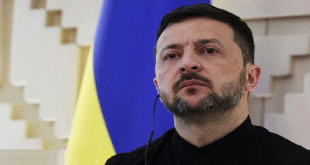09-02-2023
PARIS/ LONDON: More than 50 encoded letters sent by Mary Queen of Scots in the 16th Century have been found and deciphered by an international team of cryptographers.
The letters, written during her English captivity, were found in a trawl of online archives at the National Library of France.
They are being described as the most important breakthrough on the subject in a century.
 The letters’ existence had long been suspected, but they were thought lost.
The letters’ existence had long been suspected, but they were thought lost.
Decoded with the help of computers, the letters are seen to be a series sent by Mary between 1578 and 1584 to the French ambassador to the court of Queen Elizabeth I in London, Michel de Castelnau Mauvissiere.
“It’s a stunning piece of research, and these discoveries will be a literary and historical sensation,” said Dr. John Guy of Clare College Cambridge, the leading historian on Mary Queen of Scots.
Born in 1542 and queen of Scotland until 1568, Mary was also queen of France for a year from 1559. As a great-granddaughter of Henry VII, she had a strong claim to the crown of England, recognised in particular by Catholics.
However, bad marriages and a series of political miscalculations led to her fleeing Scotland and spending the last 19 years of her life a prisoner of her cousin, Queen Elizabeth. She was eventually beheaded on 8 February 1587 for her alleged role in a plot to kill the English queen.
 Her tragic fate made her a martyr for Roman Catholics and she has been an object of fascination for historians, novelists and film-makers.
Her tragic fate made her a martyr for Roman Catholics and she has been an object of fascination for historians, novelists and film-makers.
The team of computer scientist George Lasry, pianist Norbert Biermann and astrophysicist Satoshi Tomokiyo all keen cryptographers initially thought the batch of encoded documents related to Italy, because that was how they were filed at the Bibliotheque Nationale de France.
However, they quickly realised the letters were in French. Many verb and adjectival forms being feminine, regular mention of captivity, and recurring names – such as Walsingham all put them on the trail of Mary. Sir Francis Walsingham was Queen Elizabeth’s spymaster.
The code was a simple replacement system in which symbols stand either for letters, or for common words and names. But it would still have taken centuries to crunch all the possibilities, so the team used an algorithm that homed in on likely solutions. (Int’l News Desk)
 Pressmediaofindia
Pressmediaofindia




